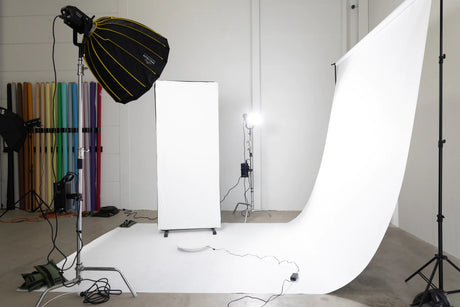Thanks to technology, we now have underwater photography equipments that are more advanced than ever. However, it does not mean that underwater photography has been made so easy now. The thing about it is that one’s technique is as important as the equipment he/she is using. It’s a unique field of photography and thus, presents unique challenges. It is through understanding the potential obstacles that you’ll learn how to create underwater photos with great quality.
Underwater Photography equipment
There is a wide range of underwater photography equipment in terms of type and quality. It’s not so hard to find underwater cameras. In fact, you’ll find lots of low-priced ones at tourist spots. However, using the cheaper kind means you’ll get cheap and poor quality photos, which is kind of fair as you get what you paid for.
The good news here is that there are way better options than the disposable ones. There are self-contained underwater digital cameras that come in different prices, quality, and options. They also vary when it comes to their maximum water depth. Some work best in as little as ten to twenty feet of water while others are perfect for recreational diving depths and even beyond. When choosing which to buy, remember that having a flooded camera is pretty much equal to having no underwater camera at all.
Also included among the options for every camera is an underwater housing unit, which is a plastic unit that can enclose a land camera, making it suitable for underwater photography. Through that accessory, photographers will be able to take their good quality land cameras to the water. A diving silicon must be applied correctly to the rubber rings in order to ensure that you have a watertight fit. You should also put the right amount as too little or too much silicon can make the housing unit leak. Also, be sure that the ring is free of grit, sand, dry sea salt residue, hair, and other debris. Otherwise, the clogging will prevent it from being watertight. And as a consequence to that, the leaking may ruin your camera.
Underwater Photos and Magnification
Normally, when we take photos above the water, the level of magnification of our eyes and the camera is the same. Things change when we go underwater. Beginners might be shocked to find that the gigantic fish they took a photo of looks way smaller in the photo. It also becomes a problem when the subject ends up chopped in half by one side of the image.
Refraction is responsible for the discrepancy between reality and the image we perceive when underwater. Light refracting through the water and your mask causes a magnification of the image of about 25%. The four-foot nurse shark you’re photographing might actually be just three feet long in reality. Because of this refraction, what you see is not exactly what you’ll get, unless your camera lens is parallel with your eyes. LCD screens may come in handy here as they allow you to see what the camera sees while you shoot. They take up much of your battery power though, so it might force you to set a time limit in taking your underwater photos.
Underwater Photography Focusing
The ideal focus in this setting is three to four feet in front of the camera. Again, refraction can distort your view so it takes practice to determine where exactly this focus is. A useful tip here is to stretch out your hand. Then let your diving buddy do the same and touch fingers. The length between your shoulders is around four feet.
Motion
Motion is a much more important consideration in underwater photography than in regular photography. On land, the subjects may be moving, but underwater, literally everything is in constant motion. The subject, the background, your diving buddy, and even you yourself never stop moving as you swim along with the currents. Due to this factor, underwater photography should be a step-by-step process. It’s wise for beginners to start with photos of corals, crustaceans, or eels hiding in coral outcrops and other relatively immobile or slow moving critters. And be mindful of fin kick-up as it can obscure underwater photos and scare off your subjects.
Underwater Photography Lighting
Perhaps by now, you’ve understood the magnitude of the effects of light refraction. In terms of lighting, the deeper you go, the less light you get. And as you go deeper and deeper, it is the red color that disappears first. And as you go further, the color spectrum becomes increasingly narrower. To address that restriction, underwater photographers use strobe flashes which can provide the missing parts of the color spectrum. They’re usually suitable for a range of three to five feet. There are specific types of strobes for the different depths you might choose to go to.
Underwater Photography Practice and Preparation
The secret to becoming a successful underwater photography is to simply practice the art. It’s the universal rule for all types of photography. More practice means better photos. As you get yourself accustomed to underwater photography, you’ll improve your photos. A practical tip here is to practice real hard before you embark on that expensive trip to the Great Barrier Reef.
A great way to practice the basics of this type of photography is snorkeling. In contrast to diving, you won’t have much lighting problems in snorkeling. You’ll be able to get used to the water magnification, light refraction, and water motion. Preparation is also an important element. For example, if you’re planning to dive in areas with fast-moving fish, be sure to set the camera to fast shutter speeds and high-speed exposures before going into the water. That’s to save you from having to fiddle with your camera as the perfect shot swims in front of you. And it saves you time too.
Clearly, underwater photography is very different from the regular photography we do on land. Because of its uniqueness, the challenges it presents are also different from that of the rest. Thus, it is important for the photographer to adapt and develop a new perspective in seeing things. I guess the best advice I can give is for you to practice, practice, practice. It is only through practice that you’ll be able to take underwater photos that are nothing less than spectacular.










